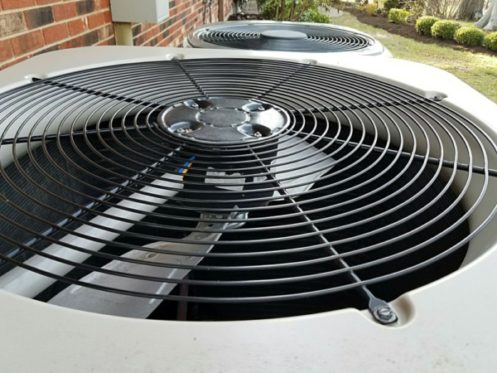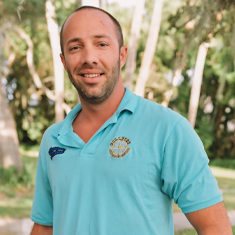The summers around Stuart get hot and humid, and you depend on your HVAC system to keep you comfortable. Likewise, some winter evenings get cool enough to warrant a heating system. But with the cost of installing or replacing an HVAC system, it’s nice to know how long they’ll serve your home. Discover what’s included in your HVAC system, how long it should serve your home, what can shorten that lifespan, and how to know when it’s time for a replacement.
The Key Components of an HVAC System
While the job of your HVAC system is to keep your home comfortable, it includes more than just your heater and air conditioner. When we think about the primary components that keep your home comfortable, this includes your heater, air conditioner, thermostat, and air ducts.
Generally, the entire system is estimated to have a service life of 15 to 20 years. However, individual components won’t necessarily last that long, each with its own specific service life. Keep in mind that the better you care for your system, the longer it’ll last and lower the chance for replacement of a new system.
How Strain and Airflow Affect Service Life
Caring for your HVAC system means reducing the strain as much as possible. Normal operation comes with some degree of strain; however, the more efficient and maintained your system is, the less strain it encounters.
Conversely, when something isn’t operating optimally, the strain increases, driving up the cost to heat and cool your home. That additional strain also has an effect on the entire system, especially if it’s not identified and dealt with quickly.
Restricted airflow in the system is one of the primary sources of strain. Your HVAC system depends on circulating air through your home. Any interruption to that circulation will add strain. The first place you may notice a restriction is with a clogged air filter. Additionally, airborne particles will settle on the heat exchanger, evaporator coil, and circulating fan. This accumulation is why routine filter replacements and system maintenance is so important.
How Long Will a Furnace Last?
If you happen to have a standard gas furnace to heat your home when the temperatures drop, you can expect it to last between 15 and 20 years. There are usually only a handful of days a year that it gets cold enough to really need a heater to stay comfortable. That means that even at 20 years old, your system may have only seen 200 total service days, or less.
That said, technology is constantly improving, especially in terms of efficiency. Even if your system is still going strong, it may be worth investing in a new furnace to continue minimizing the energy needed to heat your home. If you’re still using a furnace, maybe it’s time to consider switching to a heat pump to keep you warm over those few days when the temperatures get chilly.
Average Life for Air Conditioners
You’ll probably read that air conditioners have an expected service life of 10 to 15 years, which is the national average. However, Floridians and residents in other areas of high humidity typically don’t see that longevity from their cooling systems.
Rather, the extra salt in the air causes the system to corrode more quickly, especially the compressor and condensing coil. This additional corrosion typically leaves air conditioners with a service life of seven to 12 years, especially in coastal areas like Stuart. You can extend the life of your system by gently washing off the outside condensing unit frequently, in addition to getting a thorough deep cleaning each year with your annual maintenance.
How Long Will Heat Pumps Serve?
You’ll likely see a similar service life from a heat pump as you will from an air conditioner. This is because they are very similar systems, both using pressurized refrigerant to transfer heat to and from the air inside your home. The big difference between a heat pump and an AC unit is the reversing valve, allowing the heat pump to also produce heat.
That said, heat pumps may have a slightly shorter service life than an air conditioner because of the fact you’ll use it throughout the year. Your air conditioner will get a break for at least a month or two when the temperatures cool off. However, due to that additional salt in the air, the outside coil will continue to corrode regardless of how much it’s used, making any difference very minor.
An Improper Size Will Cost You
Your system’s service life is also dependent on getting a system that’s properly sized for your home. Smaller systems are less expensive to install than larger systems. However, larger systems have higher heating and cooling capacity. While larger may seem advantageous, it’ll actually prevent your home from heating or cooling properly, and will take years from the service life.
An undersized system won’t transfer enough heat to effectively heat or cool your home. This leads to unusually long heating and cooling cycles, increasing the wear on your system. An oversized system will also pose problems, with the extra capacity causing overheating or over cooling, tripping safety switches. This overheating and over cooling produces extraordinary wear, increases your energy consumption, not to mention costing more to install.
Installation can Make or Break Service Life
Your system’s service life is also dependent on getting the system installed properly. Industry analysts estimate that as much as 90% of HVAC systems are installed improperly. The installation problems could be with the unit itself, with the ducts, or even with the fuel lines for the system.
Improper installation can lead to airflow issues, causing restrictions that inhibit proper air circulation. Conversely, it can also cause leaks in the system, allowing conditioned air to leak out or unconditioned and unfiltered air to leak in. Furthermore, improper installation can lead to refrigerant leaks for your air conditioner or heat pump, or fuel leaks for a furnace. Both of these can lead to hazardous conditions and rapid damage.
Signs That You Need a Replacement
You don’t have to wait for your system to surprise you with a failure to know you’re going to need a replacement. Rather, start planning when you first install it, and then watch for the signs that it’s coming.
The first sign is simply the age. Once your system reaches about 15 years old, you’ll want to start making the plan for when you’ll replace it. This actually allows you to take advantage of off-season discounts and avoid interrupting your normal routine to deal with an emergency.
Next, watch for increased energy consumption and repairs. You’ll notice your energy consumption consistently climbs higher than the same month the year before. You’ll also notice a significant increase in repairs. Multiply the previous two years of repair bills by the age of the unit, either heating or AC. Once that cost exceeds that of a new system, it’s time to replace the unit.
Whenever people around Stuart need HVAC service to keep their home comfortable, they call Billfish Air Conditioning. Our team of expert technicians provide both heating and air conditioning installation, service, and repair. We also offer ductwork service. Call to schedule your consultation with one of our trusted HVAC installers today!






